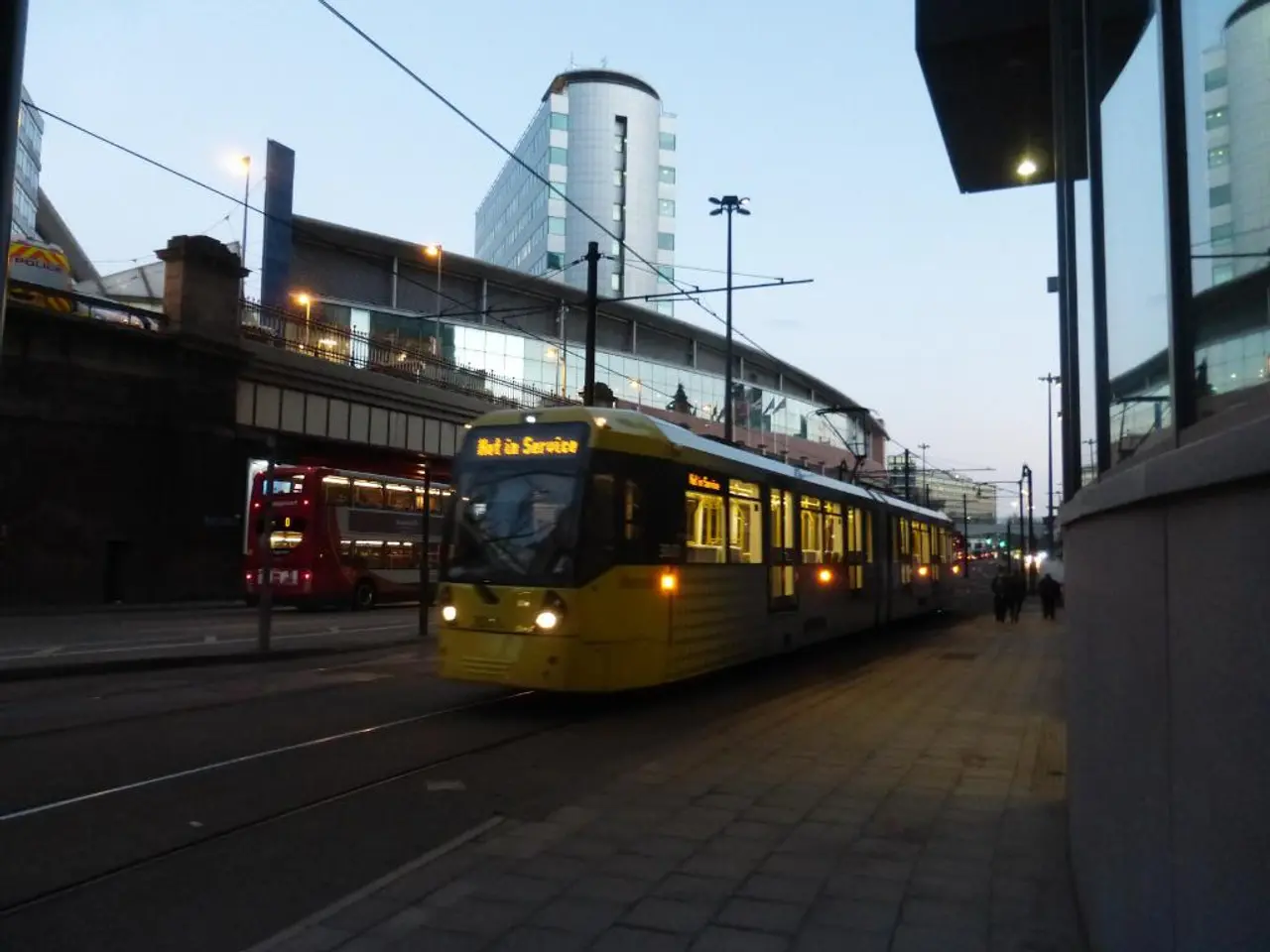Network conditions escalate, according to TransnetBW's declaration
On Tuesday, September 19, 2023, the grid operator TransnetBW has announced a tight network situation due to a predicted storm at the North Sea. The storm is expected to cause an oversupply of renewable electricity that cannot be fed into other parts of the country, potentially leading to a tight network situation from 10 a.m. to 12 p.m.
The North Sea islands are expected to experience lively south-west to west wind and heavy gusts as part of the predicted storm. This weather condition is a common issue during which an oversupply of renewable electricity arises, making it difficult to feed into other parts of the country.
To help manage this tight network situation, TransnetBW has appealed to power consumers to reduce their consumption from 10 a.m. to 12 p.m. on Tuesday, September 19, 2023. Any necessary power consumption should be shifted to the period from 6 a.m. to 10 a.m. on the same day.
Reducing power consumption during this time can help save costs and carbon dioxide emissions. The German Weather Service has also predicted the storm at the North Sea, with lively south-west to west wind and heavy gusts on the North Sea islands, on Tuesday.
Weather differences have been a contributing factor to previous tight network situations. These differences cause fluctuations in power generation and demand, leading to strain on the grid. High simultaneous demand, such as evening EV charging concentrated in specific neighborhoods, can also cause local congestion despite overall grid capacity.
The grid is designed to meet peak demand that occurs infrequently, leading to overall low utilization but vulnerability during peak periods. Aging infrastructure, with many lines and transformers over 25 years old, causes bottlenecks and increased maintenance risk. Slow grid expansion and cumbersome permitting delay infrastructure upgrades needed to relieve congestion.
To address these challenges, TransnetBW and other grid operators are focusing on solutions that aim to reduce consumption peaks and optimize existing capacity. These include smart EV charging, demand response programs, flexible distributed resources, advanced storage, and grid modernization.
Smart EV charging involves controlling the timing and rate of EV charging to avoid peak load spikes and align with renewable availability. Demand response programs incentivize consumers to shift or reduce consumption during peak hours, supporting the balancing of supply and demand and alleviating strain on the grid.
Local flexibility markets use distributed energy resources (solar, batteries, EV chargers) managed intelligently to redistribute power flows and optimize grid utilization. Grid modernization and digitization improve grid visibility and operational efficiency, enabling better congestion management and utilization.
Long-duration energy storage (LDES) provides firm, dispatchable power through intermittency and peak demands, increasing grid resilience. Utility-scale storage solutions, like advanced compressed air energy storage, can store excess renewable energy during periods of low demand and release it during periods of high demand, helping to balance the grid and reduce the need for additional electricity from other regions.
In summary, weather-induced demand variability and peak consumption can cause tight network situations that can be mitigated by smart charging, demand response, flexible distributed resources, advanced storage, and grid modernization. These combined strategies address both immediate congestion and the systemic challenges of aging infrastructure and slow expansion, helping to ensure a stable and sustainable electricity grid for all.
- The predicted storm at the North Sea on Tuesday is expected to cause an oversupply of renewable electricity in the renewable-energy industry, making it difficult to distribute the energy to other parts of the country, as mentioned by TransnetBW.
- To optimize the existing capacity and reduce consumption peaks in the finance sector, TransnetBW and other grid operators are implementing solutions like smart EV charging, demand response programs, flexible distributed resources, advanced storage, and grid modernization.
- Long-duration energy storage (LDES) is a crucial solution in the renewable-energy industry for balancing the grid and reducing the need for electricity from other regions, particularly during periods of high demand and intermittency.




